There are many reasons why riders might want to transport a motorcycle by vehicle: maybe you need to take your bike to the dealer for repairs or want to get from A to B without riding hours on the interstate. For example, if you live in Washington and want to ride the Colorado BDR, you’re going to burn through a lot of rubber on those 50/50 tires by the time you get there. So then you start thinking about some kind of toy hauler—a trailer, perhaps—but trailers are expensive, cumbersome, and not very fuel-efficient. Also, those living with rules and regulations through strata or homeowner associations might not be allowed to store a trailer, no matter how small.
Another scenario might be you’re an avid dirt biker happy to explore the trails closer to home. However, that involves a few miles of urban riding, and you don’t want to go through the trouble of making your dirt bike street legal.
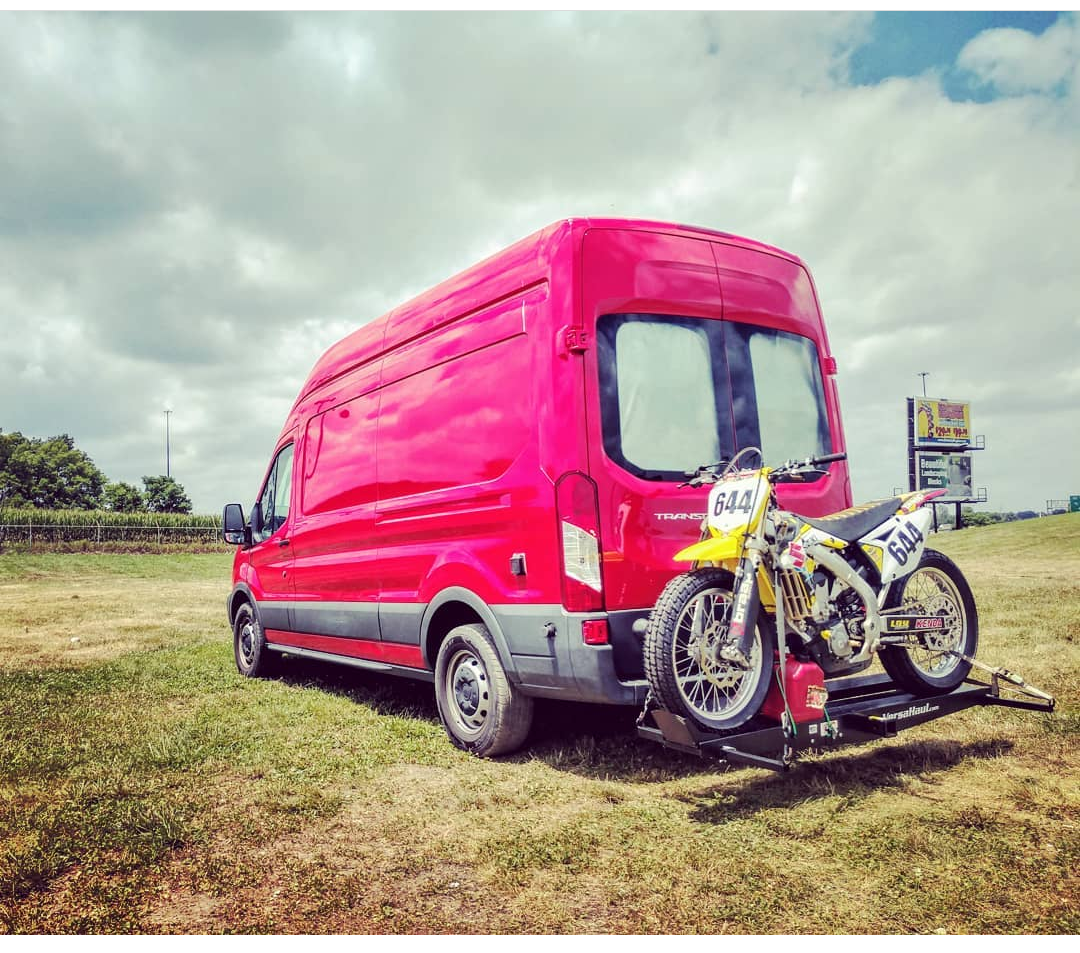
Photo credit: @the_big_red_van on Instagram.
And what about long trips around the country or the world, where you want both a vehicle and a motorcycle? An extra set of lightweight wheels is ideal as a shuttle vehicle or for emergencies in case of a vehicle breakdown far from anyone who can help. I am seeing more and more overland vehicles with bikes on the back.
For the above examples and many others, a hitch-mount can be a cost-effective, low-maintenance solution. It’s easier to get a motorcycle on and off a hitch than crawling it up a wobbly ramp into the back of a pickup. Plus, not everybody has or wants a truck, or you might have a canopy or camper already taking up that space.
If you’ve decided that transporting a motorcycle attached to your vehicle makes the most sense, but you’re not sure which bike to choose, here are some lightweight motorcycle options for hitch mounts.
But first…
Hitch Class
You’ll want to establish what hitch class you’ll need, which determines the maximum weight you can transport on a motorcycle carrier. Learn more about hitch classes here.
Most motorcycle carriers can handle between 400-600 pounds. For the overlanding crowd, I’ll stick with light- to mid-weight, off-roading options, meaning under 400 pounds. Keep in mind, even if your hitch can hold something heavier, do you really want to muscle something like an F 800 GS on and off a hitch-mount? Choose a bike weight you’re comfortable loading and off-loading.
Carrying Capacity
Once you’ve determined the carrying capacity for your vehicle and motorcycle carrier, you now have a number to work with for choosing a motorcycle. Be sure to factor in any aftermarket modifications, like auxiliary tanks, that, when filled, can add 30 or more extra pounds to your bike.
The options below rate from lightest to heaviest using wet weight where applicable. All are chosen to work with hitch-mounts.
1. UBCO 2×2 Electric Utility Vehicle—144 pounds
You wouldn’t want to carry an UBCO bike up and down stairs into your apartment, but this electric motorcycle is possibly the lightest motorized two-wheeler out there that’s also cool. This 2×2 is great for use as a shuttle for paddling trips, as a farm bike, or for off-road trips from base camp.
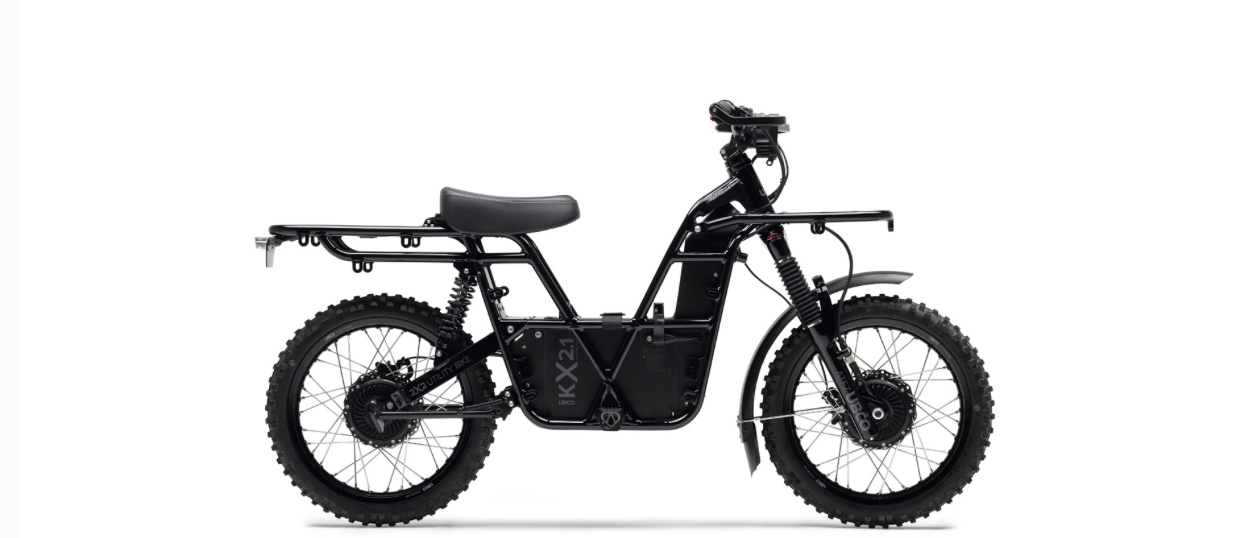
2. Dirt Bikes—250 pounds or less
For the most part, all dirt bikes fit into the lightweight motorcycle category, with adult bikes weighing about 250 pounds at most. For serious off-pavement, single-track trips, dirt bikes are optimal for carrying on almost any vehicle.

3. Honda CRF300L—309 pounds
For a decent lightweight on- and off-road bike you can load onto your vehicle, the Honda CRF300L fits the bill. These bikes can do long-distance rides with luggage. Unencumbered, they go the distance for dirt and single-track days, as well.
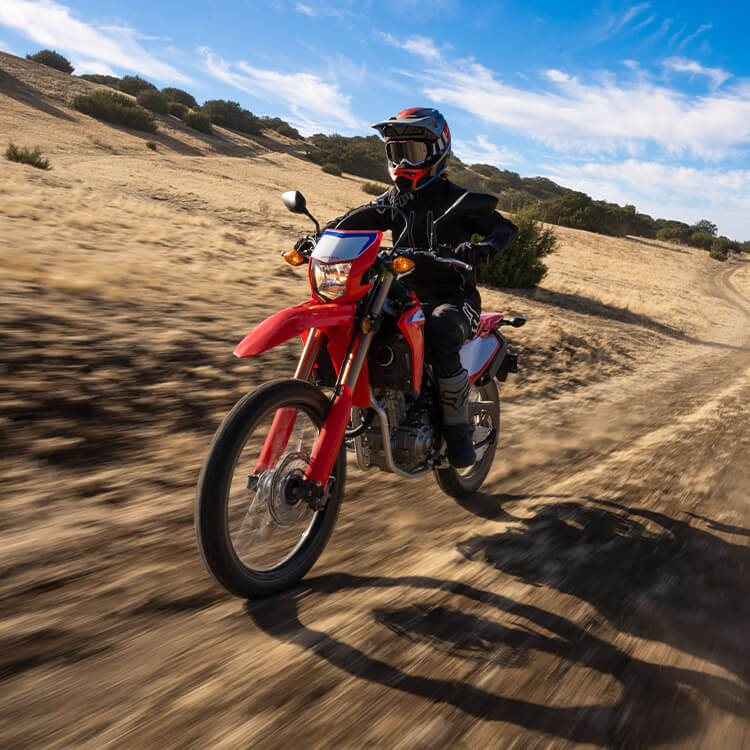
4. KTM 690 Enduro R—350 pounds
Let’s say you want to do some long days both on and off-pavement, like, for example, exploring the Backcountry Discovery Routes. This KTM might be one of few ADV bikes suitable for a hitch-mount that can also go the distance in on-road comfort and off-road capabilities.
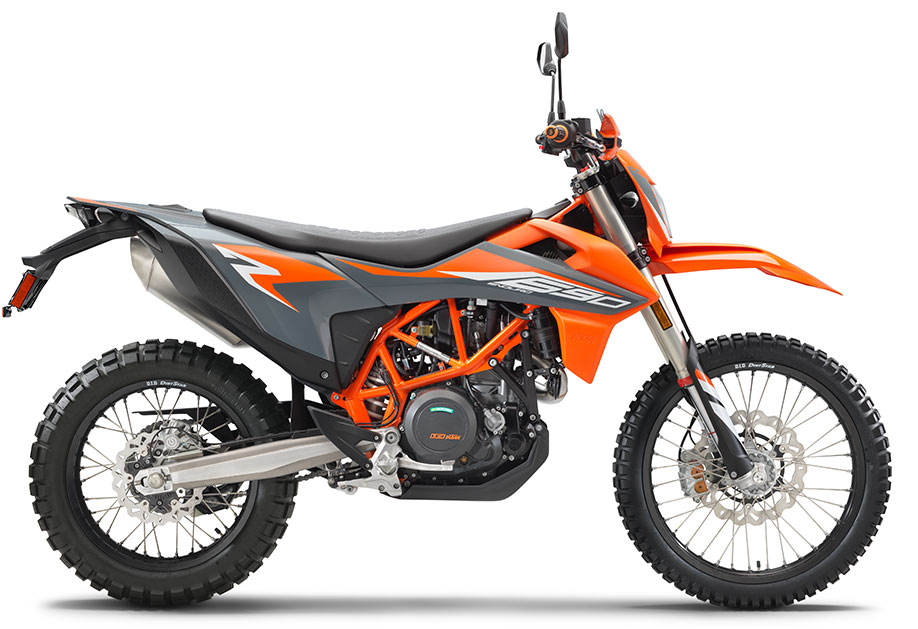
5. Suzuki DR650S—366 pounds
If you’re looking for an all-round dual-sport that’s still light enough for carrying on a vehicle, the DR650S is ideal. With enough torque for highway speeds, this bike is also designed to tackle the dirt, meaning the DR can be used in both an urban and rural setting.
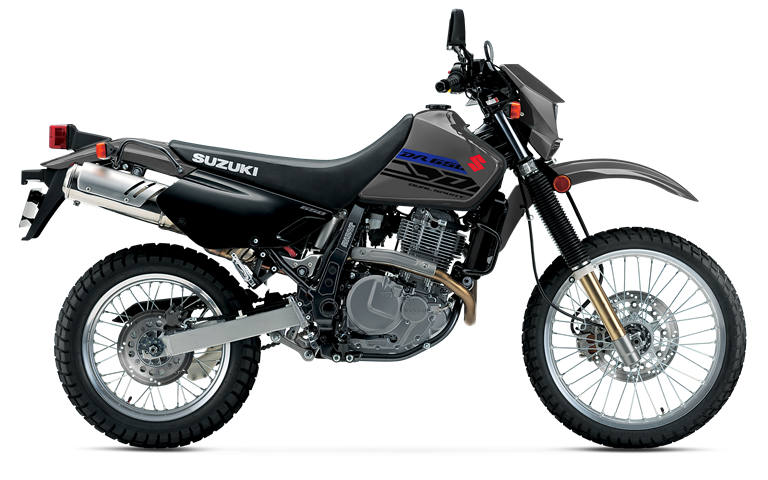
Some things to consider when using a hitch-mount:
- Continually monitor the carrier and the frame of your vehicle for rust. In places where salt is used on the roads during winter, rust can weaken the structure and therefore lessen the weight it is safe to carry.
- Make sure there’s enough clearance on your vehicle, so you’re not damaging the hitch entering and exiting driveways, parking lots, etc.
- Also, ensure there is enough clearance between the bike’s handlebars and rear windows or anything else the bars can hit when the vehicle is jarred.
- As mentioned above, make sure you choose a bike whose weight you’re comfortable loading and off-loading, so the bike doesn’t fall on you.
- Hitch-mounts can block taillights and license plates, so check this before investing in either a carrier or a bike.
- In some cases, you may need to upgrade the suspension on your vehicle to take the added bike weight, which makes a hitch-mount less cost-effective.
Our No Compromise Clause: We carefully screen all contributors to make sure they are independent and impartial. We never have and never will accept advertorial, and we do not allow advertising to influence our product or destination reviews.

